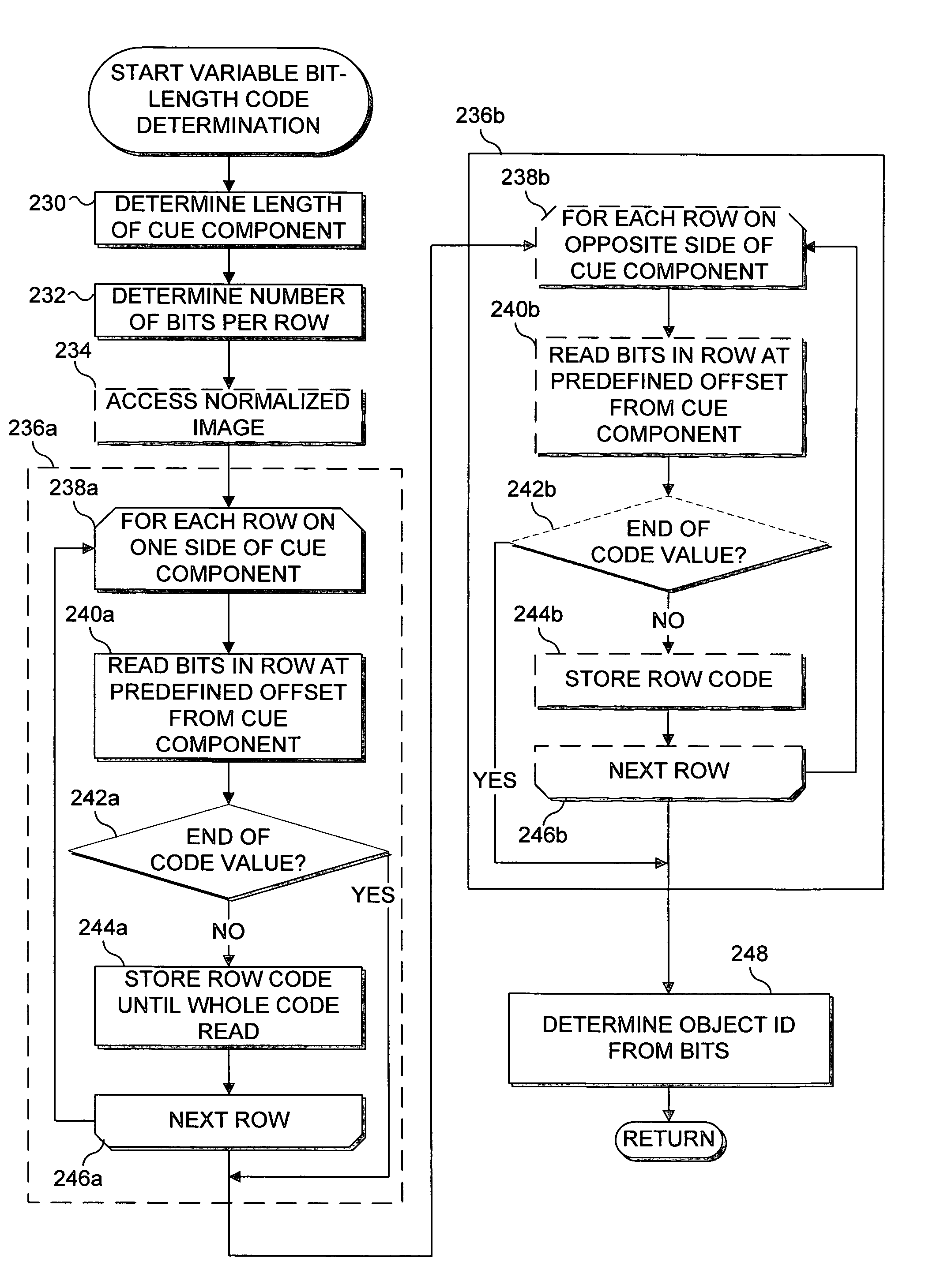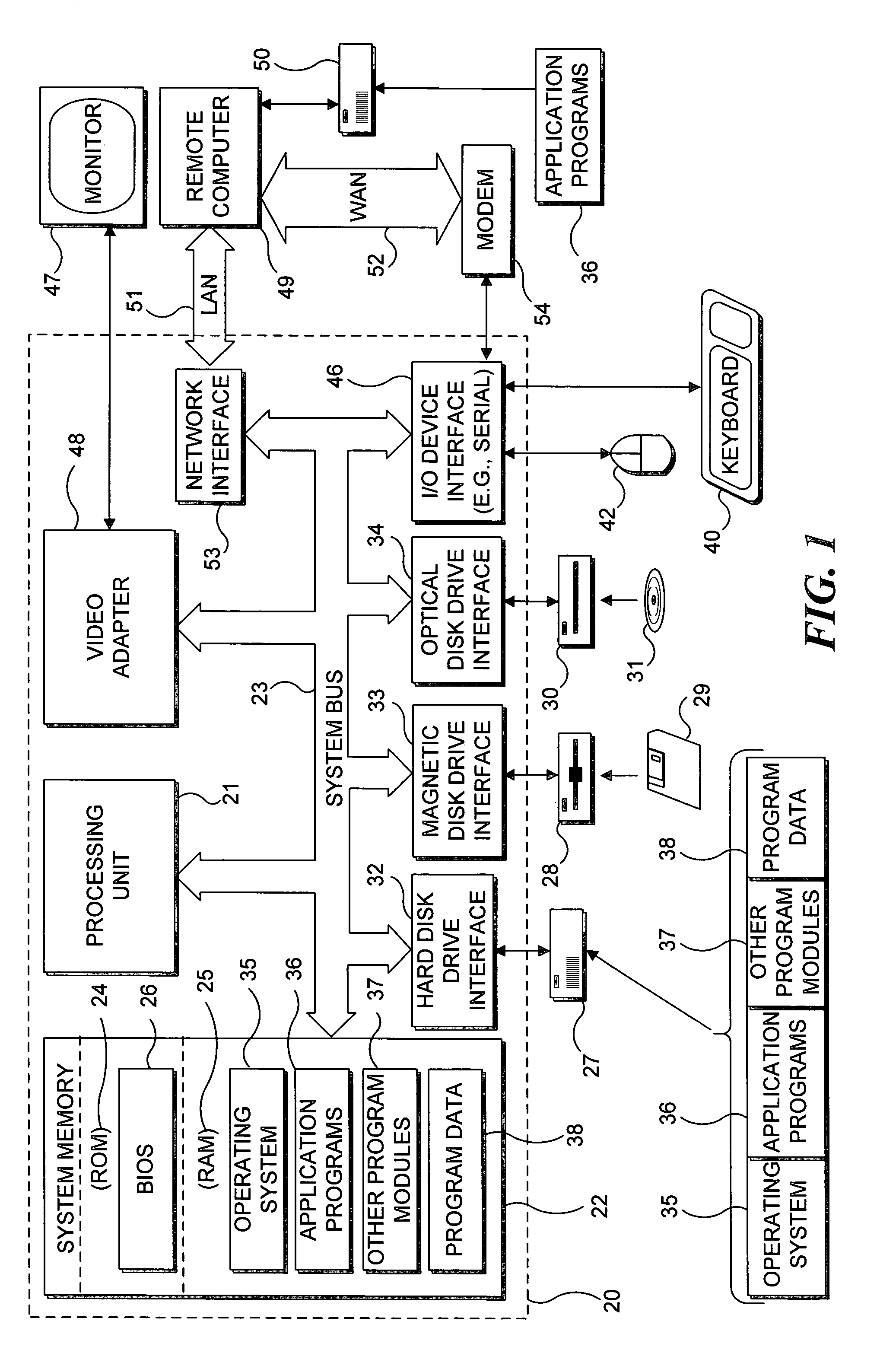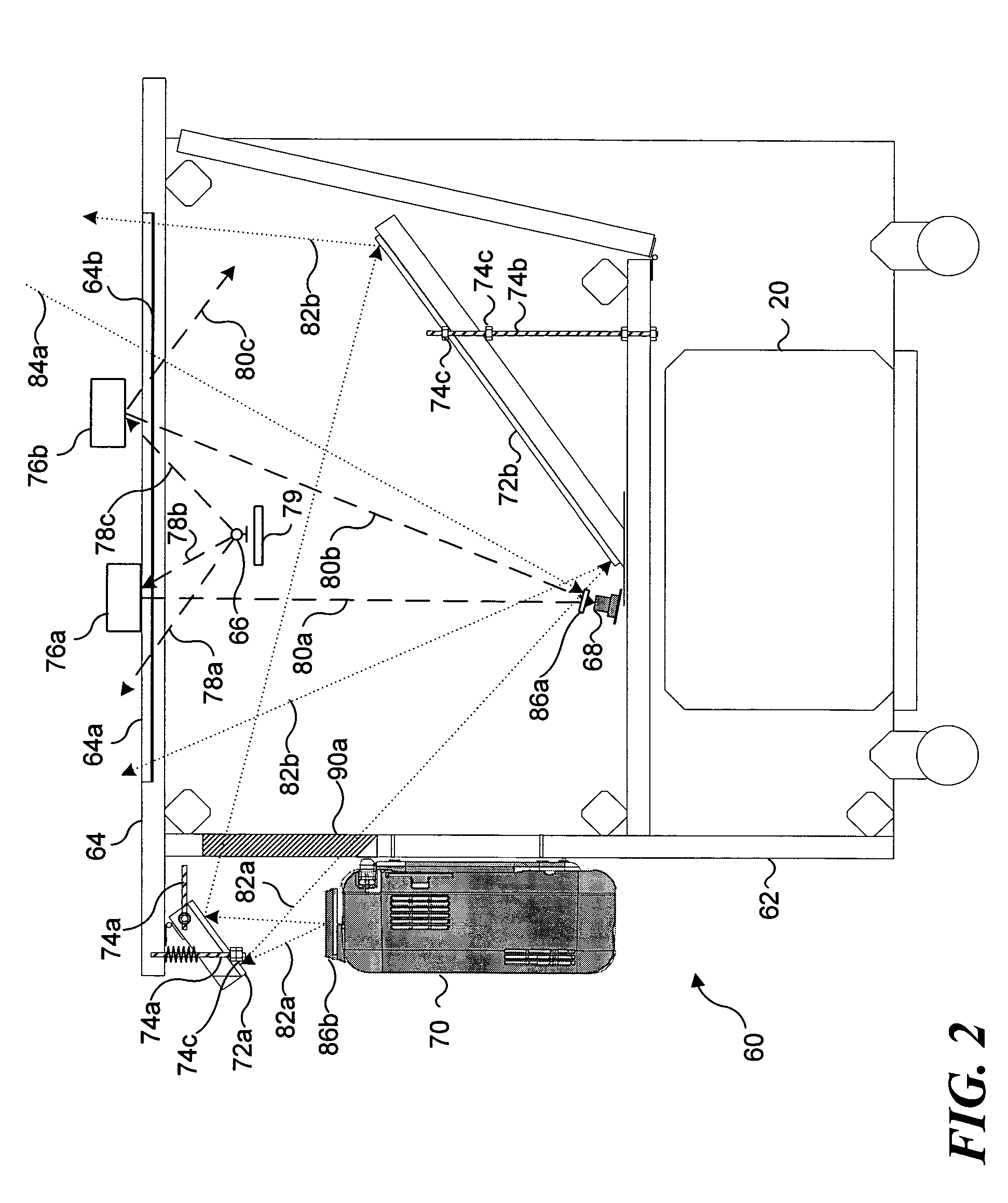Identification of object on interactive display surface by identifying coded pattern
a technology of object identification and coded pattern, applied in the field of encoded patterns, can solve the problems of not being able to address many of the problems of prior art visual codes designed to work with high-resolution scanners, and it is much more difficult to decode visual codes on objects within images, so as to achieve the effect of reducing nois
- Summary
- Abstract
- Description
- Claims
- Application Information
AI Technical Summary
Benefits of technology
Problems solved by technology
Method used
Image
Examples
second embodiment
[0056]Having determined the position and orientation of the connected component, the image processing module may perform one or more optional decision steps to facilitate determining the code type and value. In one embodiment, optional decision steps 106, 110, 114, 118, and 120 are not used and the process flows sequentially from step 104 through code determining steps 108, 112, 116, 122, 124, to a step 126 that ranks the results of the code determinations and selects the closest code type based on statistical analysis. In a second embodiment, these optional decision steps are used to select the code determining steps that should be executed. For example, an optional decision step 106 dictates whether a code determining step 108 should be executed. This embodiment thus functions as a filter to reduce the computations required for code detection.
[0057]To ensure a code type is not inadvertently discarded, a combination of the above techniques may be used. The combined technique may em...
first embodiment
[0063]In optional decision step 120, the image processing module tests the connected component for nearby code bits. If the connected component has disconnected bits within a predetermined distance and orientation (i.e., the connected component has nearby code bits), then the image processing module continues at step 122 to determine the matrix code. Details for determining the matrix code are discussed below with regard to FIGS. 11 and 12. After determining the matrix code or if the connected component does not have disconnected bits within a predetermined distance and orientation (i.e., the connected component does not have nearby code bits), then the image processing module continues at step 124 to determine the gray scale code. Details for determining the gray scale code are discussed below with regard to FIGS. 13, 14, and 15. (Note that the logic flow from step 122 to step 124 refers to the sequential logic flow of the )
[0064]In step 126, the image processing module ranks the r...
PUM
 Login to View More
Login to View More Abstract
Description
Claims
Application Information
 Login to View More
Login to View More - R&D
- Intellectual Property
- Life Sciences
- Materials
- Tech Scout
- Unparalleled Data Quality
- Higher Quality Content
- 60% Fewer Hallucinations
Browse by: Latest US Patents, China's latest patents, Technical Efficacy Thesaurus, Application Domain, Technology Topic, Popular Technical Reports.
© 2025 PatSnap. All rights reserved.Legal|Privacy policy|Modern Slavery Act Transparency Statement|Sitemap|About US| Contact US: help@patsnap.com



